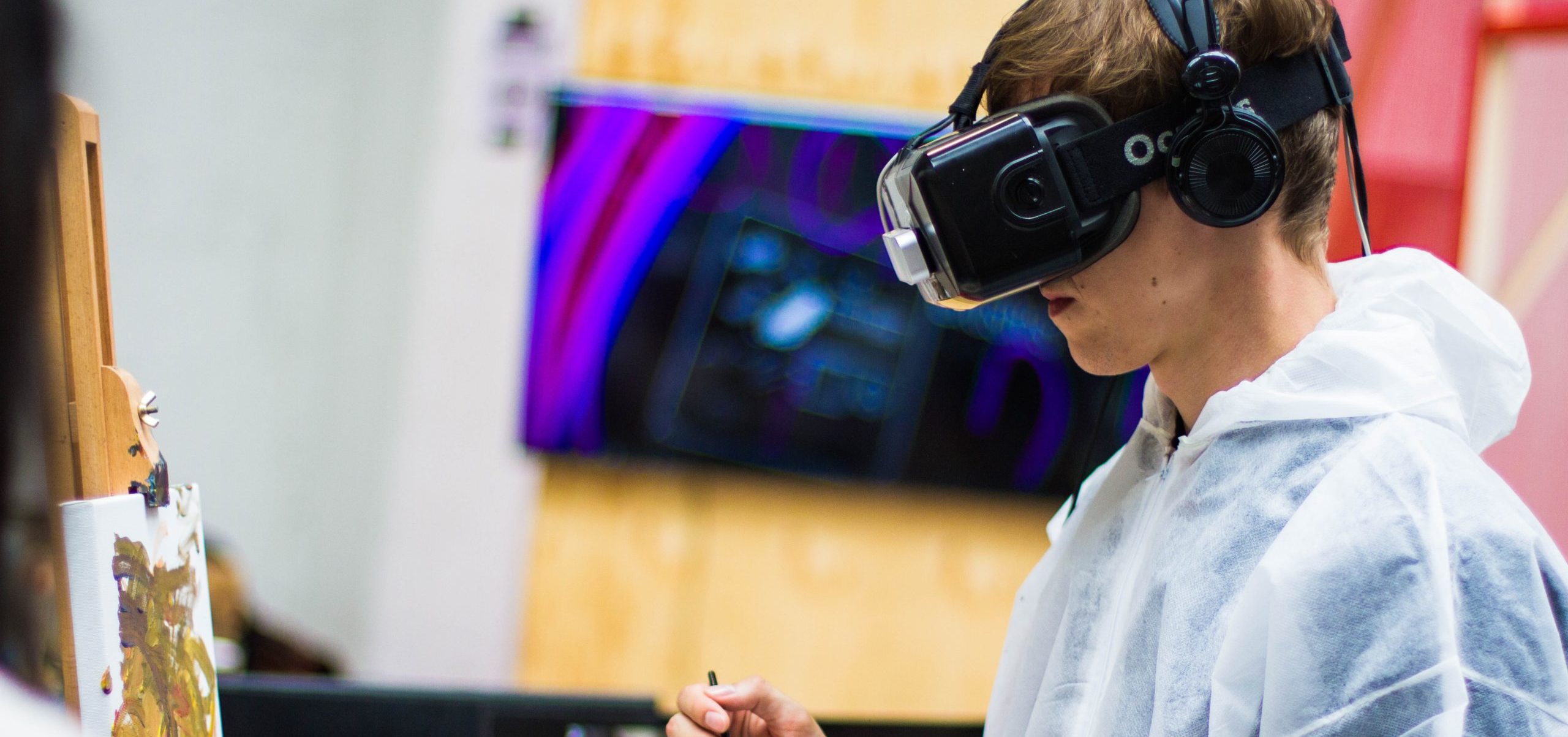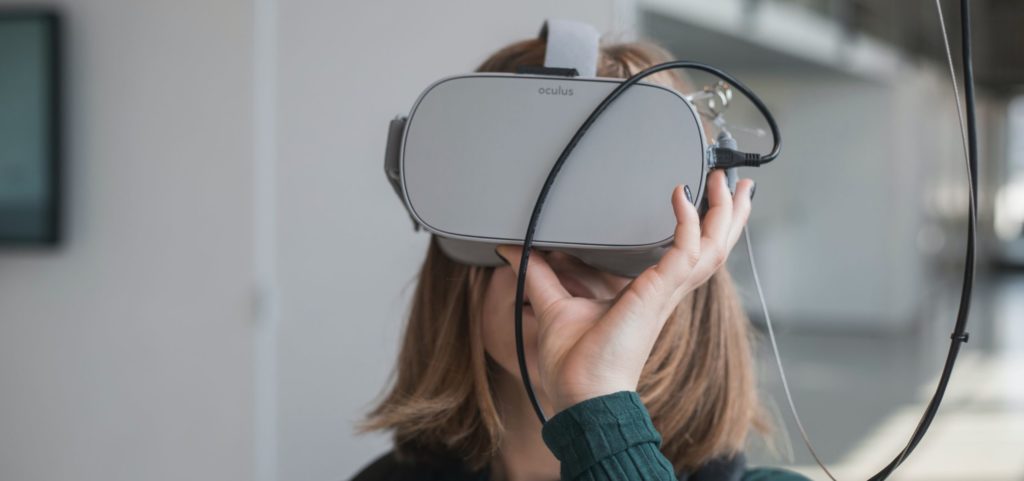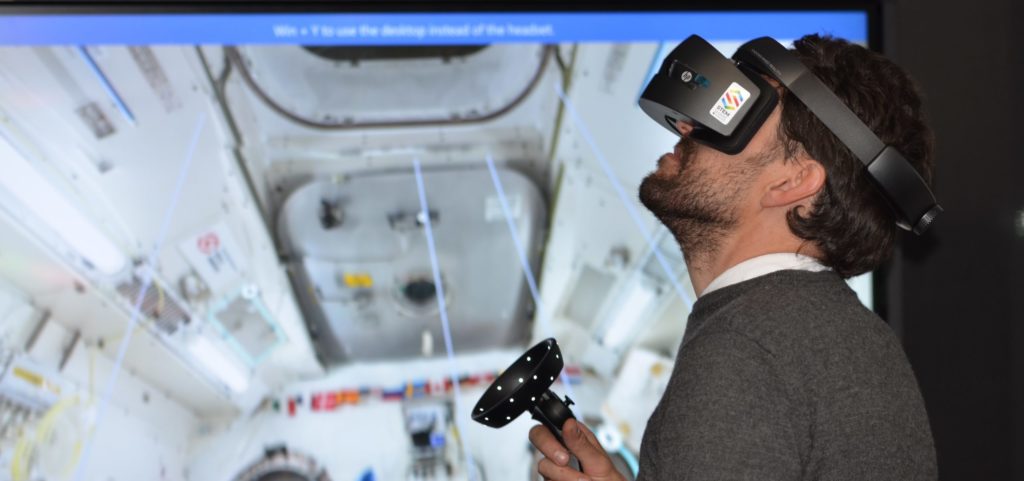Modern students are more immersed in technology than ever before, using it to study, work, socialise, play games, watch movies and TV shows, and so much more.
Universities are taking advantage of this love of technology to create engaging learning experiences in the virtual world. Students can enjoy new and fascinating experiences across amazing digital landscapes through virtual reality hardware or VR.
In this article, we’ll discuss how and why virtual reality learning has exploded in popularity in recent years. We’ll go into detail about its benefits before sharing how you can use the technology as a powerful educational tool.
What is virtual reality learning?
Virtual reality is a computer-generated simulation of a three-dimensional image or environment. Using virtual reality hardware, users can interact with this image or environment in a believable way.
Augmented or mixed reality is a similar type of simulation that blends real and virtual worlds. A popular example is the mobile game Pokémon Go, which overlays 3D images of Pokémon characters over real environments.
Over the past few years, virtual reality learning has become increasingly popular in higher education settings, especially for training. Some universities use the software to teach students about complex topics like anatomy, chemistry, and physics—but it can also help with learning practical skills like cooking and furniture assembly.
The popularity of virtual reality learning in higher education will continue to rise as more institutions adopt this innovative approach.
How do learning and higher education institutions use virtual reality?
Virtual and augmented reality has a vast range of applications in higher education settings. It is especially useful for immersing students in environments they wouldn’t otherwise have access to, like visiting another continent through virtual field trips or flying a plane.
In 2020, the University of Nottingham introduced the first educational module taught entirely in VR. Each week, 50 engineering students visit a virtual ‘island’ for miniature lectures and seminars, helping them learn first-hand about VR’s applications in technology and product design.
In this way, VR is a fantastic option for bringing students together during remote and hybrid learning. University of Nottingham student Rebekah Kay embraced the “veil of anonymity” VR offers, encouraging students to share their views and speak up in class more confidently. Kay also enjoyed the engaging and immersive feeling of ‘in-person’ learning VR offers.
Universities around the globe have also used VR technology to:
- Teach anatomy through a 360-degree video experience, allowing students to explore body systems through different angles and perspectives.
- Offer virtual field trips to other countries, continents, or even planets.
- Create a virtual laboratory environment where students can safely experiment with different equipment, chemicals, and solutions.
- Relive historical events through immersive experiences like the BBC’s 1943 Berlin Blitz in 360˚.
- Gamify the learning experience to keep students motivated and engaged.
Regardless of the subjects your students are currently studying, they’ll surely find some benefit in the captivating and immersive world of virtual and augmented reality.
How can virtual reality learning help higher education students?
Virtual reality in education can help students in diverse ways, from boosting engagement to creating unique and powerful learning experiences. From immersive storytelling to inspiring empathy and understanding, the educational benefits are endless!
Let’s go into more detail about a few of them now.
Engages students
Virtual reality is a fantastic way to keep students engaged and focused during lesson time.
There are many reasons why virtual and augmented reality is so engaging. Firstly, it creates a unique, novel experience distinctly different from what students are used to—and new activities are a powerful way to stimulate and inspire students’ minds.
Secondly, researchers have found that virtual reality can boost positive emotions and improve memory among young and bright students. According to a 2018 study published in Research in Learning Technology, students using VR reported higher engagement and an improved learning experience over non-VR users.
As we touched on in University of Nottingham student Rebekah Kay’s message above, the semi-anonymity of VR education can encourage shy students to speak up and become more engaged and focused in the classroom environment. The feeling of being fully immersed in the digital world also offers a significant engagement boost.
Want to learn more? Download the ‘Quality in Online Project-Based Learning‘ white paper to see how top institutions are using experiential learning.
Fosters learning through experience
Hands-on, experiential learning is one of the best ways to keep students engaged in classroom content. It also increases interest, promotes teamwork and communication, and helps students feel more confident and secure in their abilities.
Virtual reality also offers hands-on learning experiences where true physical interaction isn’t possible, covering everything from STEM education to humanities. For example, engineering students can safely explore the inner workings of industrial machinery, while culinary students can experience baking in a high-pressure kitchen environment.
Creates realistic experiences
Virtual reality has now evolved to a point where the line between the physical and digital worlds has blurred. Virtual experiences are convincing enough to offer the same benefits as genuine hands-on work.
Traditionally, educational simulations may have involved a student sitting in front of a screen and watching a video. The student may have used a controller or a series of buttons to interact with the screen.
With virtual reality, the student is fully immersed in the digital experience. They can turn their heads to explore the world, use their hands to pull a lever or flick a switch, and physically walk to move around the virtual environment. This level of interaction makes the virtual world feel significantly more realistic than a traditional educational simulation.
Encourages inclusive classrooms
Virtual reality is also paving the way for more inclusive classroom environments. Because of its highly immersive and adaptable nature, it can break down barriers and provide new opportunities for marginalised groups.
VR proponents have also highlighted its particular benefit for pupils living in isolated communities. They can use the technology to access support systems and build reciprocal relationships with other learners, educators, and employers.
Some developers have also created virtual reality applications and devices that can act as assistive technologies. This technology can help make physical environments more accessible for people with disabilities.
Promotes collaboration
Immersive education in VR provides unique opportunities for distance learners to connect and collaborate in real-time. Because of the realistic nature of the virtual world, working with other students can have the same authentic benefits as a real-world group activity.
Using collaborative VR software, students can meet in the virtual space, chat through speech or text, and even shake hands! Too, students can create an avatar to represent their likeness or express their creative thinking.
One example of a collaborative virtual reality tool is The Wild. In this immersive learning environment, engineering and architecture students can work together to design, analyse, and review projects. It is a powerful way for students to create and visually present models without needing to meet in person or invest in expensive tools and equipment.
Enhances creativity
According to recent research, VR technology is central in reshaping creative work among adults. As a brand new medium for creators to work with, it is likely to respin and redefine narratives students and educators have followed for decades.
In a virtual world, students are more likely to explore, experiment, and try new things without the fear of making mistakes. With no real-world implications if something goes wrong and no safety issues to worry about, truly, the creative opportunities are limitless.
Builds industry-ready students
Many higher education institutions now use VR to teach students job-ready skills. The technology is especially beneficial for any student learning to work in hazardous or inaccessible environments.
Virtual internship programs are one example of how VR boosts student employability. Through these opportunities, students can develop on-the-job skills without needing to actually be on the job!
Because VR is so diverse, there’s no one way to deliver virtual work-integrated learning. Approaches can range from fully immersive programs extending over several weeks to single assistive modules to help students learn a particular skill.
For example, the Bank of America recently switched from traditional ‘click-through’ eLearning methods to virtual reality training. These VR experiences teach employees how to open accounts, conduct service calls, and other essential job skills.
Students can use the same educational technology to build skills before entering their careers, impressing employers and giving them a serious leg-up over other applicants.
Is virtual reality the future of education?
While virtual reality headsets first entered the consumer market in the early to mid-1990s, the technology saw an explosion in popularity in the late 2010s. Today, VR is available at an affordable price point, making it accessible to more students and learning institutions.
A 2019 study published in the American Journal of Pharmaceutical Education found virtual reality technology could potentially play an integral role in future pharmacy education. Researchers noted that additional software and technological development are necessary for this to happen.
Another 2019 study published in the Future Healthcare Journal shows similar findings. According to medical education researchers, VR is a cost-effective and reliable way to deliver on-demand clinical training and reach learning objectives. The study noted that VR technology will transform how institutions deliver education to clinicians in the future.
It’s clear that virtual reality will enormously impact how students of the future learn. As technology develops, we’ll see more opportunities for these innovative devices to revolutionise education and training.
How Practera can help
Practera’s powerful experiential learning platform and managed services makes delivering immersive and engaging virtual reality learning experiences easier. Using the platform, you can author and seamlessly deliver VR adventures custom-tailored to your student’s interests and needs. By connecting with our team, we can help connect your projects with industry leaders and support your students throughout the program with a dedicated program manager.
Virtual internships are also one of Practera’s unique offerings that help students connect with employers and undertake remote hands-on learning. By connecting students with companies, Practera can help you deliver real-world experiences in a scalable, cost-effective way that is sure to engage students.
You can also easily measure student performance through the platform’s 360-degree feedback, pulse check, and analytics dashboard features.
Ready to get started? Why not start a conversation with a member of our friendly team today? You can also request a platform demo or download our comprehensive white paper to learn more.




